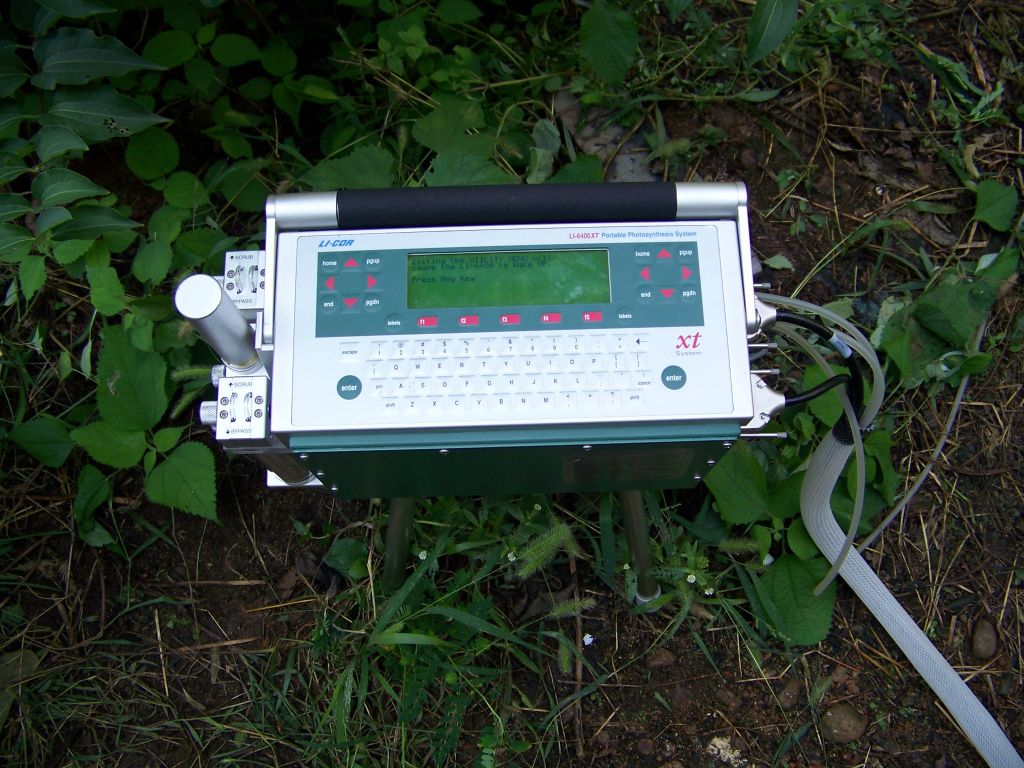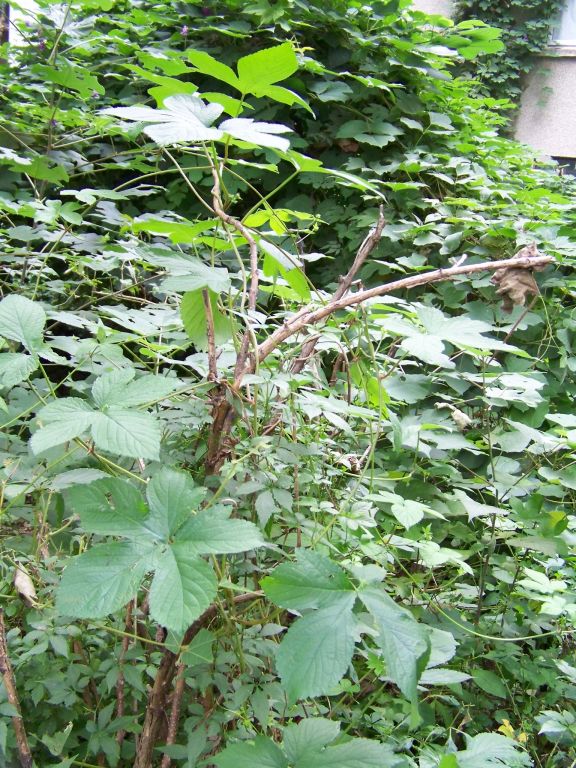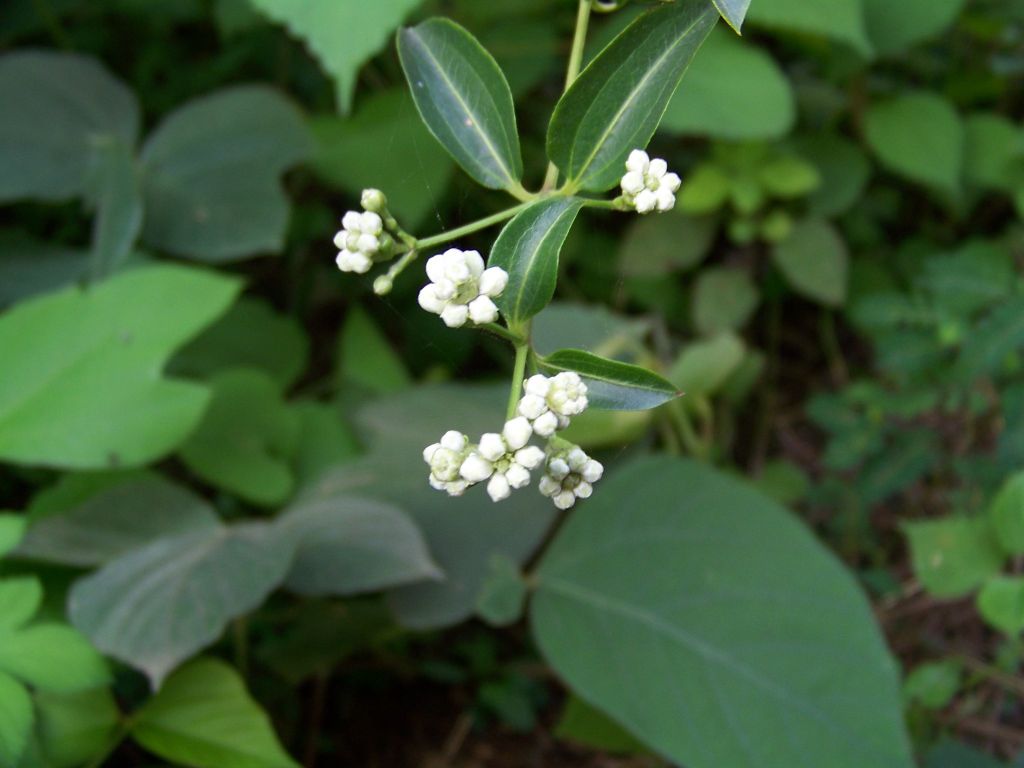博文
An introduction of an endangered plant, seven-son flower
|||
An introduction of an endangered plant, seven-son flower (Heptacodium miconioides)
Gao Jian-guo
Seven-son flower (Heptacodium miconioides) is a unique species of Heptacodium genus of Caprifoliaceae. It was established as a key national II state-protected plant species in 1993 because of its small population size (Chen, 1993; State Council, P. R. China, 1999). Under natural conditions, seven-son flower growths in valley, forest gap or forest edge. According to our previous field investigation, it is only distributed in Jing County, Anhui province, and Jinhua, Tiantaishan, Zhejiang province. Seven-son flower in the original place (the first observation site, Xingshan County, Hubei province) was disappeared.
Seven-son flower is s a photophil plant but not tolerant to strong light, the most suitable for its growth light intensity is 350-650μmol m-2 s-1 (Liu and Xu, 2003; Liu et al., 2005). The habitat loss and fragmentation are two main causes for endangering. The current studies on seven-son flower focused on population ecology, genetic evolution and reproductive physiology. The seven-son flower population is in a recession stage, the genetic diversity is very low (Li and Jin, 2005; Liu et al., 2007), pollen germination and seed set rates are lower than the other widely distributed plants (Bian et al., 2002; Bian et al., 2004; Bian et al., 2005; Bian and Jin, 2007). The insect pollination efficiency is low for seven-son flower; the pollination style is mainly self-pollinated. However, the pollen germination rate of seven-son flower is about 1 / 3, the average seed-setting rate is 34.1%, and the lower seed setting rate is an important reason of its low reproductive capacity (Bian et al., 2002).
In-situ and ex-situ conservation are two main methods to eliminate the harmful effects of habitat loss and fragmentation. For seven-son flower, ex-situ conservation should be considered priority based on its ecological and physiological characteristics. To my great delight, seven-son flower has successfully been introduced to some botanical gardens in the United Kingdom and the United States. As a matter of fact, we transplanted several seven-son flower seedlings to our botanical garden in 1996, but there are no regenerating seedlings until present. The ecological and physiological response should be illustrated while ex-situ conservation is put into practice for the precious and adorable plant.

Figure 1. An invasive plant, Pueraria lobata (Fabaceae) is approaching a seven-son flower (photographed by Gao Jian-guo)

Figure 2. A kind of herb, Humulus scandens (Moraceae) (photographed by Gao Jian-guo)

Figure 3. The adorable leaves of seven-son flower (photographed by Gao Jian-guo)

Figure 4. A Li-6400XT portable photosynthesis system (photographed by Gao Jian-guo)

Figure 5. An individual Ricinus communis (Euphorbiaceae) in botanical garden (photographed by Gao Jian-guo)

Figure 6. A dead seven-son flower, with a H. scandens around her (photographed by Gao Jian-guo)

Figure 7. The beautiful flowers of H. miconioides (photographed by Gao Jian-guo)

Figure 8. The beautiful flowers of H. miconioides (photographed by Gao Jian-guo)
The literatures about the reproductive characters of seven-son flower are open-access for you:
A Study on the Reproductive Biology of Heptacodium miconioides.pdf
Morphology and variation of apparatus of endangered plant Heptacodium miconioides.pdf
Characteristics of Reproductive Modules of Endangered Heptacodium miconioides.pdf
Characteristics of Flowering and Fruiting of Heptacodium miconioides an Endanger.pdf
References:
Chen Lingzhi. Status and Strategies for Biodiversity Conservation in China. Beijing: Science Press, 1993, 47-53.
State Forestry Administration and the Ministry of Agriculture, P. R. C. List of Wild Plants Under State Protection (First Batch). 1999, Decree No. 4. http://www.gov.cn/gongbao/content/2000/content_60072.htm
Li Junmin, Jin Zexin. Genetic diversity of Hepatacodium miconioides natural populations in Zhejiang Province. Chinese Journal of Applied Ecology, 2005, 16(5): 795-800.
Liu Peng, Yang YS, Hao Chaoyun, Guo WeiDong. Ecological risk assessment using RAPD and distribution pattern of a rare and endangered species. Chemosphere, 2007, 68(8): 1497-1505.
Bian Caimiao, Jin Zexin, Li Junmin. A Study on the Reproductive Biology of Heptacodium miconioides. Plant Diversity and Resources, 2002, 24(5): 613-618.
Bian Caimiao, Jin Zexin, Li Junmin. Morphology and variation of apparatus of endangered plant Heptacodium miconioides. Bulletin of Botanical Research, 2004, 24(1): 170-174.
Bian Caimiao, Jin Zexin, Li Junmin. Characteristics of Reproductive Modules of Endangered Heptacodium miconioides. Acta Botanica Boreali-Occidentalia Sinica, 2005, 25(4): 756-760.
Bian Caimiao, Jin Zexin. Characteristics of Flowering and Fruiting of Heptacodium miconioides an Endangered Plant in Tiantai, Zhejiang Province. Journal of Biomathematics, 2007, 22(2): 329-335.
Liu Peng, Yang Y.S., Xu Gendi, Hao Chaoyun. Physiological response of rare and endangered seven-son-flower (Heptacodium miconioides) to light stress under habitat fragmentation. Environmental and Experimental Botany, 2005, 57(1-2): 32-40.
Liu Peng, Xu Gendi. Effect of light in site fragmentation on physiological characteristics of Heptacodium miconioides. Scientia Silvae Sinicae, 39(4): 43-48.
Related article: Mourning for Heptacodium miconioides
https://blog.sciencenet.cn/blog-260340-472418.html
上一篇:混乱的参考文献
下一篇:秋日紫锥菊